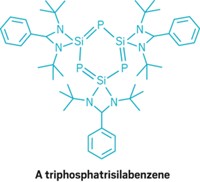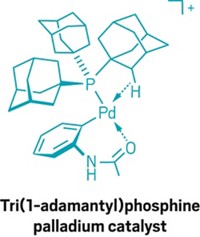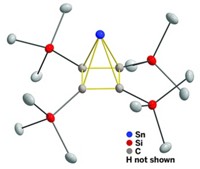Advertisement
Grab your lab coat. Let's get started
Welcome!
Welcome!
Create an account below to get 6 C&EN articles per month, receive newsletters and more - all free.
It seems this is your first time logging in online. Please enter the following information to continue.
As an ACS member you automatically get access to this site. All we need is few more details to create your reading experience.
Not you? Sign in with a different account.
Not you? Sign in with a different account.
ERROR 1
ERROR 1
ERROR 2
ERROR 2
ERROR 2
ERROR 2
ERROR 2
Password and Confirm password must match.
If you have an ACS member number, please enter it here so we can link this account to your membership. (optional)
ERROR 2
ACS values your privacy. By submitting your information, you are gaining access to C&EN and subscribing to our weekly newsletter. We use the information you provide to make your reading experience better, and we will never sell your data to third party members.
Synthesis
Chemistry’s First Definitive Silylidyne
As a metal alkylidyne analog, Mo≡Si complex broadens the scope of organometallic chemistry
by Stephen K. Ritter
May 10, 2010
| A version of this story appeared in
Volume 88, Issue 19
Transition-metal complexes containing a metal-carbon triple bond, known as metal alkylidynes, are among the most important organometallic compounds—they are in part the basis of Nobel-Prize-winning research on olefin metathesis. Alexander C. Filippou and coworkers at the University of Bonn, in Germany, have broadened the scope of this chemistry by preparing the first silicon analog, a molybdenum silylidyne (Angew. Chem. Int. Ed. 2010, 49, 3296). Filippou’s group and others have previously synthesized germanium, tin, and lead congeners of alkylidyne complexes. But isolating the silicon analog has remained one of silicon chemistry’s most challenging targets. The problem has been finding a suitable organosilicon(II) precursor, Filippou says. His team recently came up with one in the form of a bulky arylsilicon chloride stabilized by an imidazole N-heterocyclic carbene (Chem. Eur. J. 2010, 16, 2866). Treating this carbene-chlorosilylene adduct with a molybdenum complex and subsequently heating the stable Mo=Si intermediate product with a carbene-trapping triarylborane led to the molybdenum silylidyne complex shown, C5H5(CO)2Mo≤SiR, where R is a bulky substituted phenyl. Isolating the metal silylidyne shows the potential of carbene-chlorosilylene adducts for generating novel compounds with silicon multiple bonds and opens the door to potential new chemistry of silylidyne complexes, the researchers note.






Join the conversation
Contact the reporter
Submit a Letter to the Editor for publication
Engage with us on Twitter